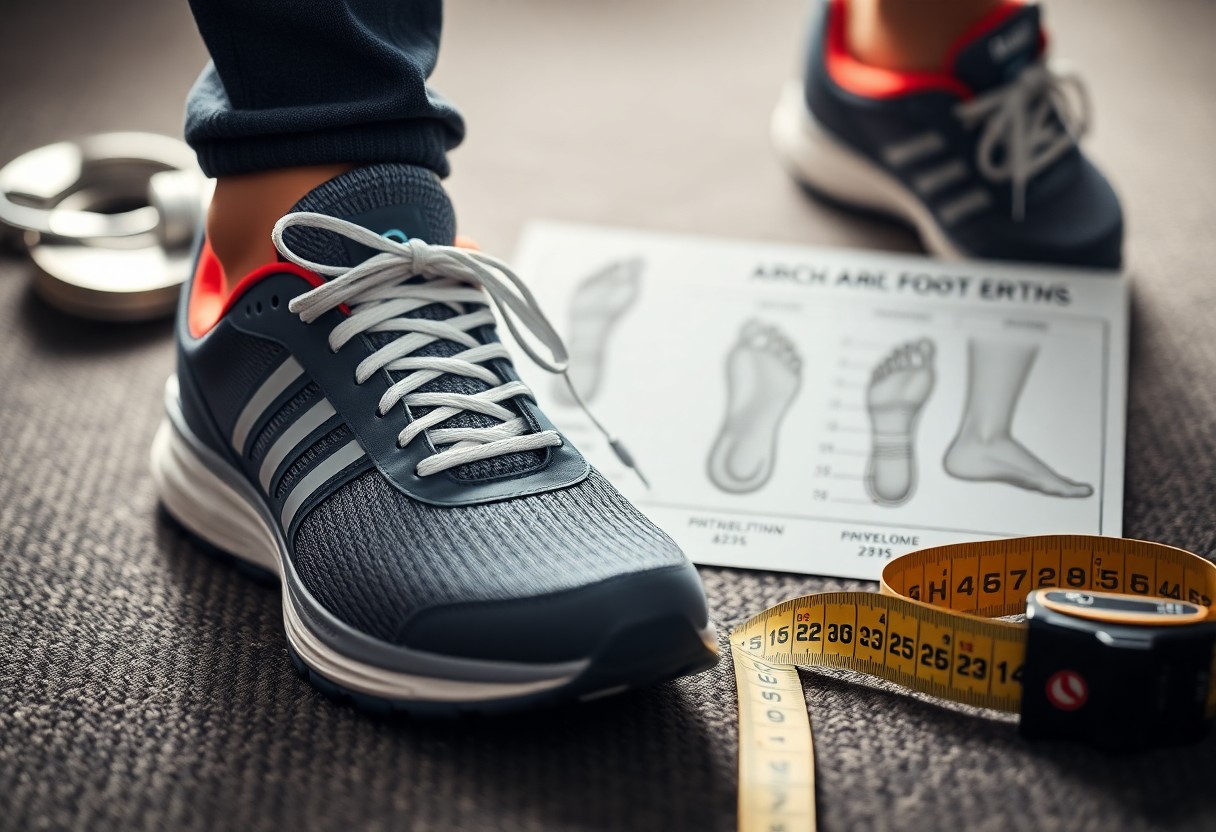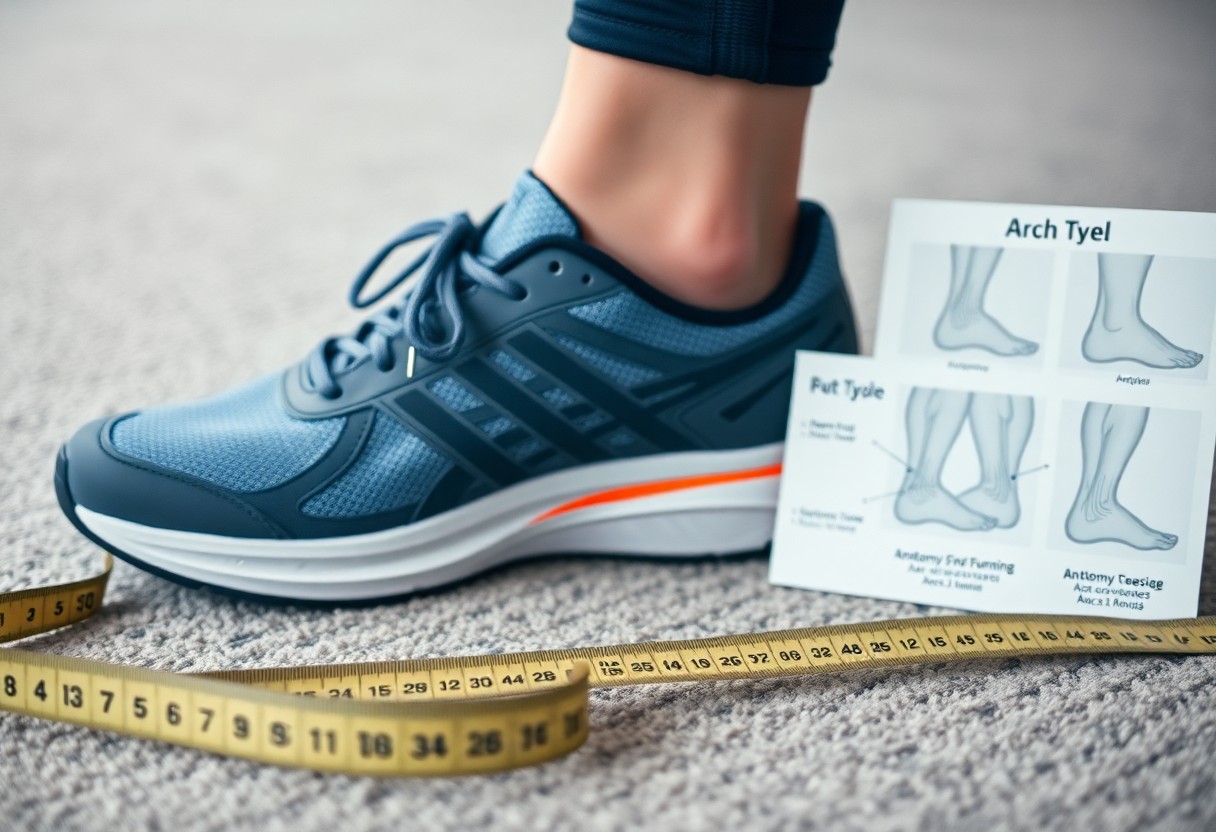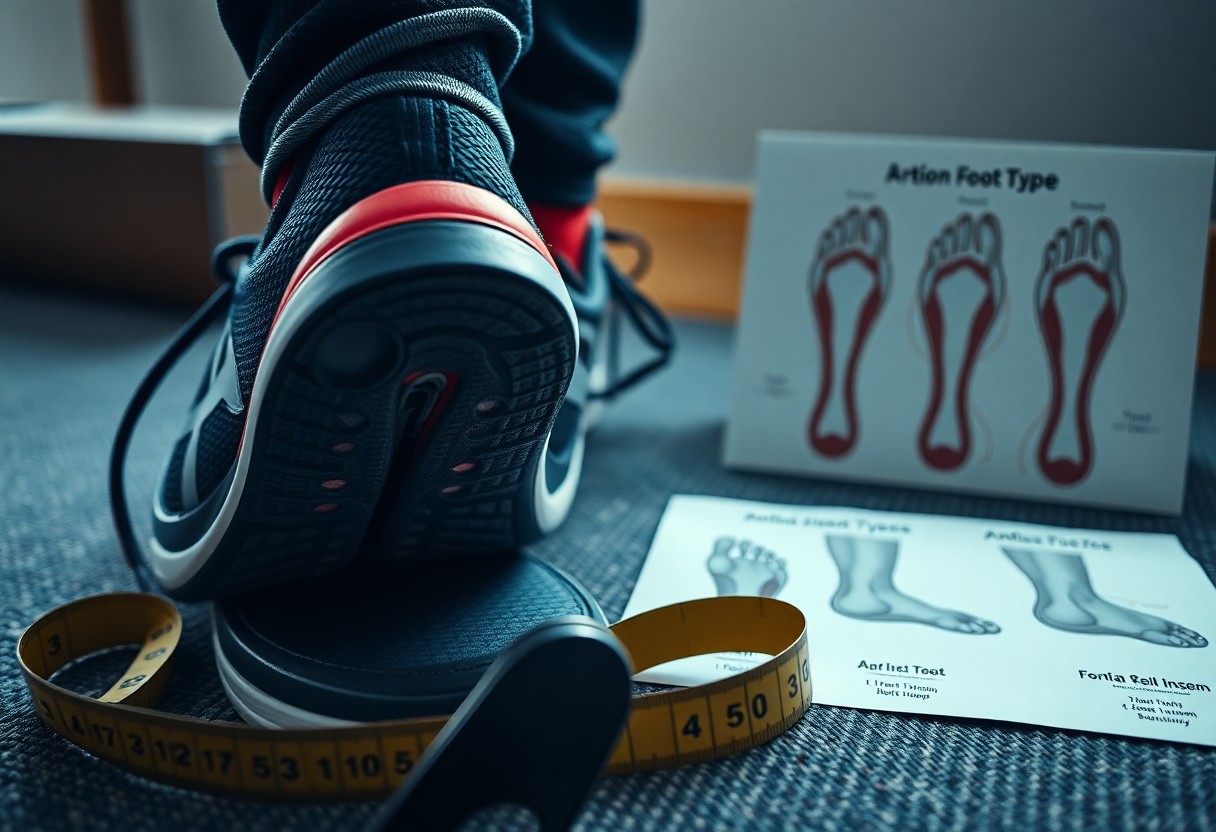Providing the right support for your feet goes beyond simply adding arch support to your footwear. It may surprise many to learn that most people do not actually need arch support in their shoes. Scientific research has shown that forgoing arch support can improve the strength of your foot muscles. Over time, dependency on artificial support may lead to muscle weakness. The human foot is crafted with natural arches that flex and adjust to different terrains, and restricting this natural mobility with rigid supports could harm your foot health in the long run. This detailed article aims to shed light on the science behind arch support, empowering you to make educated choices regarding your foot health.

Exploring the Historical Evolution of Arch Support in Footwear Design
The natural support system of your feet has played a fundamental role in footwear design throughout history. The concept of arch support surged in popularity during the 1920s, primarily due to Dr. William Scholl’s groundbreaking work in commercial orthotics. Before this innovation, people relied heavily on the natural strength and flexibility of their feet. Understanding this historical context helps us appreciate how our comprehension of foot health has transformed, urging us to reconsider contemporary footwear practices in light of past wisdom.
Tracing the Shift from Traditional Footwear to Modern Practices
The journey of footwear development reveals that ancient civilizations primarily wore simple, flat sandals or often went barefoot. Such practices encouraged natural foot development and strength. Our ancestors possessed resilient and flexible feet, free from artificial supports, as evidenced by studies on indigenous groups who continue to embrace traditional footwear. This historical lens emphasizes the crucial role that natural foot mechanics play in sustaining foot health and highlights how modern footwear trends frequently overlook these foundational principles.
Evaluating How Modern Shoe Design Affects Foot Health
By the mid-20th century, particularly in the 1950s, footwear manufacturers began integrating built-in arch support as a standard feature in shoes. Today, the majority of contemporary footwear is designed with structured arch support, a characteristic that has become industry standard despite minimal scientific evidence supporting its necessity for everyone. This shift mirrors changing consumer expectations and industry norms, raising important questions about the implications of such designs on foot health. With around 70% of modern shoes incorporating arch support, it is vital to assess whether this reliance is advantageous or harmful.
Research published in the Journal of Foot and Ankle Research indicates that excessive dependence on arch support can lead to muscle weakness in the feet. Consequently, many podiatrists now recommend regular barefoot walking and the use of minimally supportive shoes to help maintain natural foot strength and enhance overall foot health.

Diving Deep into the Intricate Structure of the Human Foot
Despite the fact that your feet consist of 26 bones, 33 joints, and over 100 muscles, they function most effectively when permitted to move freely. The arch of the foot is a self-supporting structure that gains strength through regular use and becomes weakened when subjected to artificial support. Studies show that 75% of individuals wearing conventional shoes with arch support experience decreased foot muscle activity, which can lead to a decline in natural foot strength over time, underscoring the necessity of allowing your feet to engage in unrestricted movement.
Uncovering the Advantages of Natural Foot Mechanics
Your foot’s natural structure is a remarkable feat of engineering, equipped with a complex system of self-support. Walking barefoot or in minimal shoes allows your feet to experience a full range of motion, enabling your arches to flex and strengthen in a natural way. Research indicates that individuals who frequently walk barefoot or choose minimal footwear develop stronger foot muscles and more stable arches compared to those who rely on supportive shoes. This highlights the critical role of natural movement in promoting foot health, as it enhances the body’s ability to maintain its structural integrity.
Effective Methods for Boosting Foot Muscle Function and Growth
Disruption of your foot’s natural movement can impede its development. Your foot muscles require consistent engagement through natural activities to preserve their strength. Research published in Nature reveals that wearing shoes without arch support fosters the growth of stronger intrinsic foot muscles. This connection emphasizes the importance of natural movement for achieving optimal foot health, especially for individuals experiencing discomfort or weakness in their feet.
Moreover, it’s essential to acknowledge the effects of wearing shoes with built-in arch support. Prolonged use of such shoes may lead to reduced muscle engagement, resulting in potential weakness. Studies indicate that transitioning to minimal footwear can significantly increase foot muscle strength by as much as 60% within eight weeks. However, it’s important to approach this transition with care, particularly if you have existing foot conditions, to prevent injury and support a healthy adaptation process.
Reviewing Scientific Evidence and Research on Foot Health
If you’re interested in understanding the science behind arch support, numerous studies demonstrate that your feet can gain strength without relying on artificial support. Various investigations reveal that natural foot movement promotes improved muscle development and enhances arch stability, underscoring the crucial role of biomechanics in maintaining foot health and the potential dangers of excessive reliance on artificial supports.
Highlighting Key Scientific Studies on Arch Support
Among the most significant findings, a study published in Nature indicates that individuals who wear minimal footwear have foot muscles that are 50% stronger than those who wear traditional supportive shoes. This data reinforces the idea that regular movement and physical activity allow your feet to maintain their arches naturally, reinforcing the advantages of selecting appropriate footwear.
Conducting a Comparative Analysis of Footwear Choices Across Diverse Populations
Contrasting Users of Traditional and Minimal Footwear
| Traditional Shoe Users | Minimal Shoe Users |
| Exhibit higher rates of flat feet | Demonstrate superior arch strength |
| Show weaker foot muscles | Exhibit stronger foot muscles |
A thorough examination of different populations reveals notable differences in foot health. The structure of your feet can adapt significantly based on the types of shoes you choose to wear, highlighting the importance for individuals to actively evaluate their footwear selections.
Insights from Global Studies on Footwear
| Developed Countries | Barefoot Communities |
| 20% flat foot occurrence | 3% flat foot occurrence |
| Higher reliance on arch support | Natural arch strength |

Investigating the Paradox of Support in Footwear Choices
Challenging commonly accepted beliefs, overdependence on arch support in shoes can undermine your feet’s natural strength. The human foot is intricately designed, comprising a complex arrangement of muscles, tendons, and ligaments that collectively provide natural support. When artificial arch support takes over this function, your foot muscles may become less active, leading to gradual weakness and a reduced ability to engage in daily activities effectively.
Comprehending the Dependency Cycle Associated with Arch Support
The habitual use of arch support creates a harmful cycle. Feet may become reliant on external support, resulting in muscle atrophy. Research indicates that 70% of individuals who frequently use arch support report increased discomfort when walking without their supportive shoes, underscoring the development of this dependency which can adversely affect overall mobility and comfort.
Linking Muscle Weakness to Excessive Use of Arch Support
Utilizing shoes with built-in arch support could weaken your intrinsic foot muscles by as much as 50%, according to findings in Nature. This weakening compromises the natural arch support system of your feet, potentially resulting in conditions like flat feet and other foot-related complications. It’s important to recognize that this muscle weakness can extend beyond your feet, as weakened foot muscles can negatively influence your overall posture and balance. Research shows that individuals who transition to minimal footwear often experience a 60% increase in foot muscle strength within six months, highlighting the advantages of steering clear of unnecessary supports.
Exploring Natural Alternatives for Enhanced Foot Health
For those seeking to move away from traditional arch support, there are several natural alternatives available that can enhance foot strength. These methods emphasize allowing your feet to function as designed, promoting the development of stronger foot muscles and more stable arches through natural movement and practices that foster foot health.
Adopting Minimalist Footwear for Optimal Natural Movement
Minimalist shoes, defined by zero drop soles, wide toe boxes, and flexible materials, encourage natural foot movement. These designs allow your feet to move freely, aiding in maintaining proper foot mechanics and promoting natural arch strength. Research indicates that consistent use of minimal footwear can boost foot muscle strength by up to 60% through everyday activities, emphasizing the significance of selecting the right footwear for your lifestyle.
Practical Strategies for Safely Transitioning to Minimal Footwear
When contemplating a shift to minimalist footwear, it’s vital to adopt a careful and gradual approach for both safety and comfort. Begin by wearing minimal shoes for brief periods, progressively increasing the time over several weeks. This strategy helps prevent overuse injuries as your feet adapt to their newfound freedom, ensuring a smoother transition that supports long-term foot health.
A successful transition should include specific foot-strengthening exercises. Start with 10-15 minutes per day in minimal shoes, adding an additional 5-10 minutes each week. Incorporate exercises such as toe spreads and short barefoot walks on safe surfaces. This incremental approach allows you to reduce the risk of common transition injuries while effectively building your natural arch strength, ultimately promoting better overall foot health.
Considering Individual Medical Factors for Optimal Foot Health
It is essential to recognize that your foot health requires individualized attention. While natural foot movement is beneficial for muscle strength, specific medical conditions may necessitate targeted support. Factors such as your foot structure, level of activity, and any pre-existing conditions will influence your ideal footwear needs, underscoring the necessity for personalized assessments.
Identifying Specific Foot Conditions That May Necessitate Arch Support
Contrary to popular belief, arch support is not universally required. However, individuals with acute injuries, severe flat feet, or certain medical conditions may find temporary or permanent arch support beneficial. Research indicates that only 10-20% of the population genuinely requires specialized arch support for medical reasons, highlighting the importance of individualized evaluations to ensure optimal foot health.
Guidelines for Comprehensive Assessments by Foot Health Professionals
To make informed choices about your footwear, it’s advisable to consult a foot health professional. Comprehensive assessments should include gait analysis, evaluation of foot structure, and review of medical history. These elements are vital for determining whether arch support is necessary or if transitioning to minimal footwear is a feasible option for your unique needs.
Support from a qualified professional can provide clarity and guidance on your foot health journey. A thorough assessment should encompass measuring arch flexibility, assessing muscle strength, and analyzing walking patterns. Your healthcare provider should also consider your daily activities and any previous foot injuries to create an effective treatment plan tailored to your requirements and lifestyle.
Analyzing Footwear Selections and Their Effects on Foot Health
Your choice of footwear plays a crucial role in your foot health. You now understand that arch support is not necessary for most individuals and may, in fact, weaken foot muscles over time. Your feet possess inherent strength and flexibility, functioning optimally when allowed to operate as intended by nature. If you are contemplating a move to minimal footwear, initiating this transition gradually will aid your feet in adapting effectively. The evidence strongly suggests that permitting your feet to function without artificial support can result in stronger muscles and improved foot health for the majority. Always consider your personal needs and consult a foot health professional for specific concerns about your foot health.
Common Questions Regarding Arch Support and Foot Health
Do healthy feet actually require arch support in footwear?
Most healthy feet do not necessitate arch support in shoes. Research indicates that natural foot strength develops more effectively without artificial support. The muscles and arches of the foot perform optimally when allowed to operate naturally. This is consistent with studies examining populations that frequently go barefoot or favor minimal footwear, which show stronger foot muscles and fewer arch-related problems.
Can prolonged use of arch support weaken feet over time?
Yes, excessive reliance on arch support can result in weakened foot muscles. When artificial support substitutes the role of foot muscles, these muscles become less active and gradually lose strength. This can create a dependency cycle. Research published in Nature suggests that individuals consistently wearing conventional shoes with arch support often experience weaker foot muscles compared to those who choose minimal footwear.
Who may actually need arch support in their footwear?
Some individuals with specific foot conditions, injuries, or medical issues may genuinely benefit from arch support. This includes those diagnosed with flat feet, specific foot injuries, or structural abnormalities. However, these cases should be evaluated by a foot health professional who can devise an appropriate treatment plan. The goal should be to restore natural foot function whenever possible, rather than relying on permanent support.
The Article Arch Support: Essential Facts About Shoe Necessities Was Found On https://limitsofstrategy.com
The Article Arch Support: Key Insights on Essential Shoe Needs First Appeared ON
: https://ad4sc.com
Comments are closed